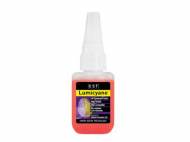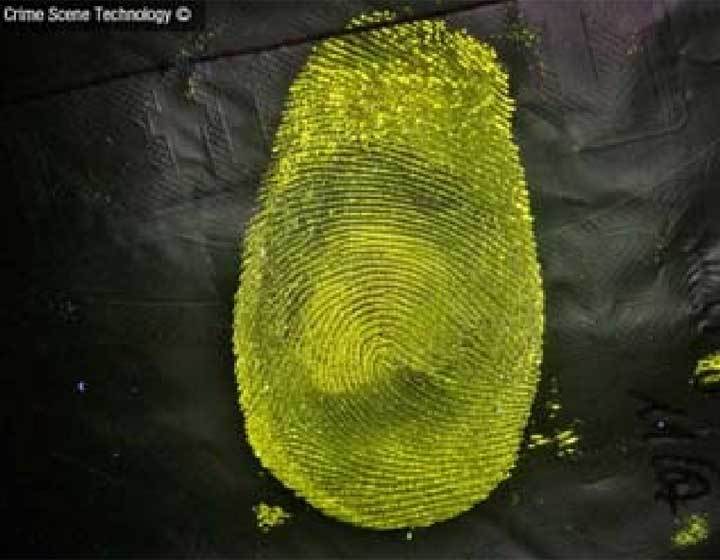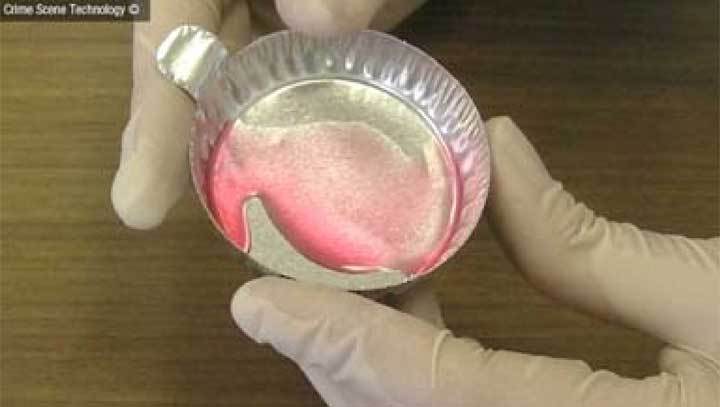Lumicyano – novel technique to detect fingerprints
 Collaboration between researchers at the Laboratoire de Photophysique et Photochimie Supramoléculaire et Macromoléculaire (CNRS/ENS Cachan) and specialized French firm Scene Technology resulted in development of Lumicyano – an innovative product that uses fluorescence to detect fingerprints. It will enable crime scene investigators (CSIs) to highlight fingerprints far more promptly and at a lower cost compared to other currently available techniques.
Collaboration between researchers at the Laboratoire de Photophysique et Photochimie Supramoléculaire et Macromoléculaire (CNRS/ENS Cachan) and specialized French firm Scene Technology resulted in development of Lumicyano – an innovative product that uses fluorescence to detect fingerprints. It will enable crime scene investigators (CSIs) to highlight fingerprints far more promptly and at a lower cost compared to other currently available techniques.
Fingerprints present a vital evidence in numerous criminal investigations. However, in some criminal cases fingerprints are too light or their contrast is too low, so it’s impossible to utilize them as evidence. When someone places their finger on an object, they leave behind a trace composed of water, salts, fats, amino acids and, potentially, DNA. In order to reveal this latent trace, CSIs use a so called “Super Glue” technique that employs fuming of a cyanoacrylate compound.
Cyanoacrylate is the generic name for a family of strong, fast-acting adhesives. In fingerprint fuming, the vapors of cyanoacrylate react with the chemicals that are found in fingerprints. This reaction leaves behind a white film that can be photographed, or copied onto tape strips.
However, this technique can at times cause certain difficulties. For instance, when the fingerprint support is of light color, the contrast with the fingerprint is too low to be photographed. Similarly, if the fingerprint is very light, the deposit will be too weak to obtain an exploitable image.
When this happens, CSIs can use a second treatment with a colorant, which turns the fingerprint fluorescent. However, this technique is costly, time-consuming and sometimes it can compromise the sampling of DNA.
For the past three decades, numerous groups of researchers have been trying to come up with a product allowing fluorescent fingerprints to be detected directly. The researchers at CNRS/ENS Cachan obtained the product, although they had to comply with the common conditions of use of a conventional cyanoacrylate. They combined cyanoacrylate with a molecule of the tetrazine family, the smallest fluorescent colorants known to date.
The molecules of tetrazine are fumed together with the cyanoacrylate onto the fingerprint support and adhere to the deposit. In this way, using a simple UV lamp or forensic lighting techniques, the fluorescent traces are obvious and can be photographed.
Lumicyano has excellent detection performance. According to the CNRS/ENS Cachan research team as well as police forces, it is highly efficient, more affordable and accelerates the investigation. Furthermore, it does not destroy the DNA that can sometimes be extracted from fingerprints.
The product has been successfully tested by the French Police and Gendarmerie as well as by Scotland Yard and the FBI. Lumicyano is already available in various countries and interest for this product is constantly increasing among CSIs throughout the world.
For more information, read the article published in the journal Forensic Science International: “Lumicyano: A new fluorescent cyanoacrylate for a one-step luminescent latent fingermark development”.











I’m from India, we have UID (unique identification whatever…)but i’m having trouble with the fingerprints scanning. Ofcourse they have cheap scanners but my fingerprints are very light for which i’m having trouble enrolling. Does this product bring any use to me ? If yes then how do i get ? Will it be liable ?
author
According to the researchers, Lumicyano solves problems with very light fingerprints. With this product one can get the fluorescent traces that can become visible with a simple UV lamp or forensic lighting techniques. Many relevant crime investigator groups have tested this product and it has proved as an effective tool for professional investigators. In order to get more information on availability Lumicyano in India, I suggest you contact researchers, whose contact information you can find on this website http://www2.cnrs.fr/en/2287.htm.